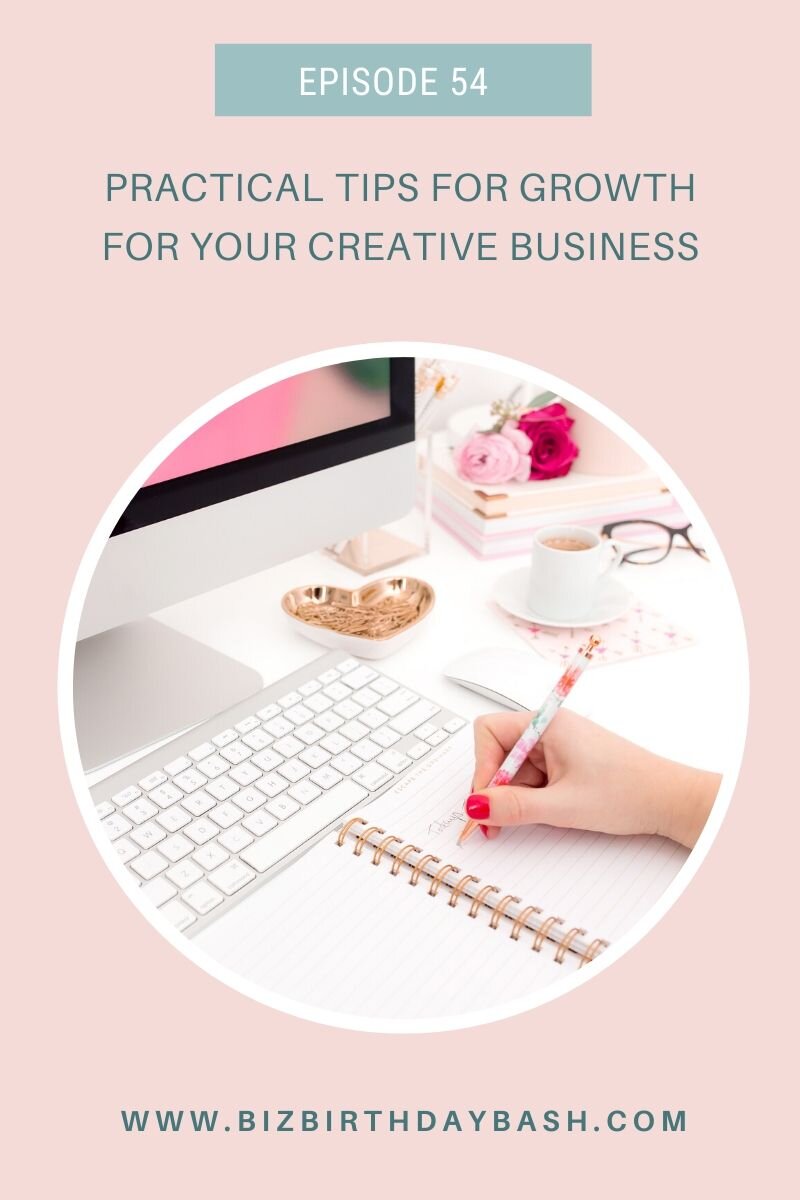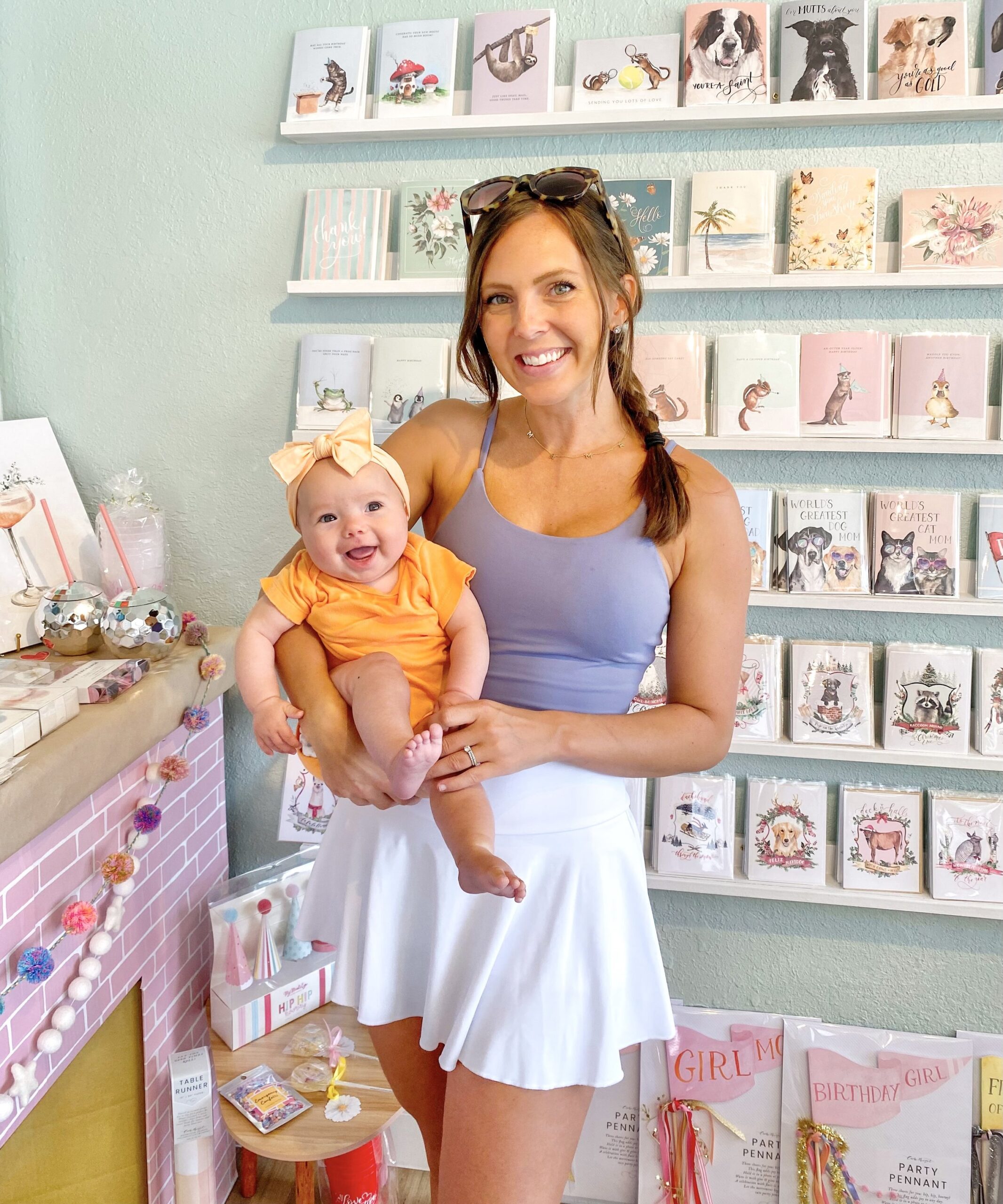Okay so we’ve talked about growth vs. scaling, but today we’re taking it one step further and sharing actionable tips that will help you begin to lay the foundation for scalability in your business. (Like, how to ACTUALLY do it!) Consider this your unofficial Part 2 of our episode with The Modern Creative gals.
If you’re new to the idea of scaling, don’t worry! We’re also digging deeper into what it means to scale PLUS the difference between growing and scaling in layman’s terms so you can pinpoint the best strategies for your creative biz.
Let’s be friends! Find us on Instagram http://instagram.com/bizbirthdaybash @bizbirthdaybash. For all show notes please visit http://www.bizbirthdaybash.com/podcast
To learn more about scaling check out Episode 51: Scaling Your Business – A Crossover Podcast Episode with The Modern Creative
For tips on scaling a product based business check out Episode 50: What to do When Your Business Outgrows You Feat. Sarah Baumann of Signet Sealed
Growing vs. Scaling: What’s the difference?
Cami: (02:09)
So, what’s the difference between growing and scaling? When you’re growing your business that means you’re putting in more money and more effort. Your business is just getting bigger and bigger. Like you’re hiring more people, but you aren’t necessarily making any more money. You’re still having increased costs because you’re hiring someone.
Then, with scaling there is more money but less effort. So with scaling, you’re not just growing for growth’s sake. That growth can be managed strategically. So growing is like linear whereas scaling is like exponential.
Tip 1 – Look for opportunities for repeatable selling
Cami: (04:18)
Number one is look for opportunities for repeatable selling. So, in our industry as artists, this would be primarily like selling prints versus selling custom work all the time. You know, you can do an artwork once and sell hundreds and hundreds of hundreds of prints versus if you do it as a custom piece, you’re just selling it that one time. So that repeatable selling is crucial for actually being able to scale your business.
Some other ways for repeatable selling, in our industry, like licensing your artwork or maybe you do the custom work, the original for someone, but then you also sell prints of it, which I’ll do this, like some of my artwork I do for wedding invitations, like florals, like sometimes if I know it’s going to be like a really cool piece, I’m like, Oh, I’m going to do this where I’m going to be able to sell prints of it as well. And like that’s part of the terms included in our custom stationary contract, that you do on your artwork, you continue to repeat, sell it basically.
Elisabeth: (05:36)
All those points are great, especially if you’re product and art based. And obviously that is where my mind is because I’m in the product space, but I also think there are ways to look for repeatable selling in other parts of your business too. Just something you can package up and continue to sell over and over and over again. The custom business model is very, very hard to scale. So, it does become tricky with custom invitations. That’s why you might consider maybe introducing a semi-custom line or something like that.
But, basically it is pretty impossible to scale fully custom work.
Tip 2 – Raise your prices
Cami: (06:47)
For custom artwork and custom stationary, the only way to truly scale that is by bringing a higher dollar amount. This one is obviously the easiest one to implement. Well, easy in terms of implementation. But like mentally it’s hard to raise your prices. But this is a really powerful lever that I think we forget about where you can increase your profits without increasing costs. And this one obviously applies to service based businesses that are difficult to scale.
Tip 3 – Leverage digital or “hands-off” products
Elisabeth: (07:43)
So, number three is leverage digital or hands off products in your business where applicable. This is pretty great. It’s pretty self explanatory too, but these can be sold over and over and over with the same amount of cost, which means they’re truly scalable. So you also don’t have to worry about the expense necessarily if you go digital anyways, you don’t have to worry about the expense of like producing some sort of product or buying some sort of materials. And this is why I had like the USPS mailing agreement used to exist on my website, and I just retired my creating hand lettered wood signs, like private YouTube series. But that was a digital product too. So I had a couple of things that were making me money without me having to like really do any of the work.
Cami: (08:29)
Yeah and you had your workshop guide too. So leveraging those digital products, like maybe it is just as simple as a PDF guide of something like you’re an expert in or you know, or maybe you’re selling like, I don’t know, like a $5 supplies guide. There are all kinds of things. Like they can be small but add up or you know, digital downloads on Etsy or doing like the creative market thing where you’re at, putting the graphics there, things like that. And those things are truly scalable.
Tip 4 – Create as many workflows, processes and automations as possible
Elisabeth: (11:21)
Create as many workflows, processes and automations as possible. So, yeah, this is amazing because for example, sending an email to 10,000 people is scalable and very easy and sending a letter to 10,000 people is not. This is the type of strategy that makes it a lot easier to do a lot of things with little help and to easily pass that on in the future for someone else to manage. So, like Cami has her virtual assistant now that has started to do some emails for her and they’re so cute and I’m obsessed.
Cami: (12:42)
Yeah, like once you have those workflows and like just, I mean workflow is such a fancy sounding word, but it’s really just like listing out the way you do things and be like, okay, number one when like if I get a bride, I know I’m going to do this, this, this, like I do this step and then this step and just writing it out and knowing what you do and just like always having that process in place and just kind of like tweaking it until it gets better and more fluid. For example, if someone came in and was like, what do I do when a client books with me? Like if she was my VA, if I brought her into the wedding side of things, I can say like here’s the list of things to do. Like they know exactly what to do. I’m not like reinventing the wheel with every single client.
Tip 5 – Do one Thing Really well
Elisabeth: (22:29)
Sometimes we’re like, “Oh I just want to add a million things!” But saying small can do wonders for your business. And as you begin the process of scaling, like adding in another product category sometimes isn’t a catalyst to scale,so keep that in mind.
I mean, it’s good to grow and to diversify, but in terms of scaling, why not be focused for a little bit you guys? This is actually a big part of our strategy with biz birthday bash. Like we’ve always come from the mindset of less is more and the products that we offer you guys, we want them to be done super, super well like this is not about quantity for us it’s about quality, which is why our three main things are like the Biz Bundle, A-Z Directory, and the Custom Stationery Contract. And yeah we added the USPS Mailing Agreement and We hosted the Stationer’s Summit, but those three things are the core of our business and like our strengths and we just continue to build off of those and like make the membership better and do those things like to the best of our abilities before doing a million other things.
Tip 6 – Fire yourself from the everyday tasks
Cami: (27:55)
Fire yourself from the everyday tasks or at least be thinking about how you can fire yourself in the future. So yeah, I know that sounds like really harsh to fire yourself, but basically that’s what you want to do. And as solopreneurs, this can be the hardest part is the letting go of tasks that someone else could theoretically do. I do have a VA now and it’s still like, even though I have her there and I trust her completely, it’s still really hard for me to give up some of the tasks that I know she could be doing.
As I started thinking about hiring somebody, I started writing down things that someone else could do, like while I was doing. And then like I’d be doing something like, Oh, someone else could totally do this for me. Like, I don’t have to be a part of this and just like kept a running list.
Just thinking about those things ahead of time and how you can make it really easy to pass on to that person.
Cami: (29:51)
So, the goal eventually in your business is to handle the tasks that only you can do. And you have to be totally honest with yourself. What can you only do? And for me, the thing that only I can do in my business is painting. Obviously, no one else can do that. But everything else, I mean, theoretically I could outsource it.
Elisabeth: (31:24)
This number six like points back really well to our episode with Sarah of signet sealed because of the whole fulfillment thing, which Cami, you might think about some day. It’s fascinating. And shipping is an everyday task. So, if you guys want to know more about that and like fulfillment, listen to Episode 50: What to do When Your Business Outgrows You Feat. Sarah Baumann of Signet Sealed.
Tip 7 – Be proactive vs. reactive
Elisabeth: (31:52)
Alright, so the last point is be proactive versus reactive. And this means you’re just trying to anticipate any challenges and having solutions in place before things happen and go all wrong.
Cami: (32:07)
So, an easy example of this would be having your canned emails ready to go so you’re not typing out the same thing over and over and over again. Like as you go through your business, you notice you start to say the same things over and over again. So why not create canned emails save yourself those five minutes it takes to say the same thing over and over again.
Maybe consider having a stationary guide like a little PDF that answers all the client’s questions that opt to keep asking them to you. You know, just always anticipating what the client or customer is going to ask before they even do it or what’s going to happen and already having that like a solution in place to just be like, Oh I already have that. You don’t even have to ask it.
Systems and Scaling
So for true scalability in your business, you’ll want to think about standardizing everything you do. It sounds super scary and counter-intuitive (especially to artist brains!) but it liberates you to focus on delivering actual results. You spend less time spinning your wheels and more time on actually creating. You’re going to be in a constant state of “tweak and repeat” because there’s no clear cut path to scaling.








+ show Comments
- Hide Comments
add a comment